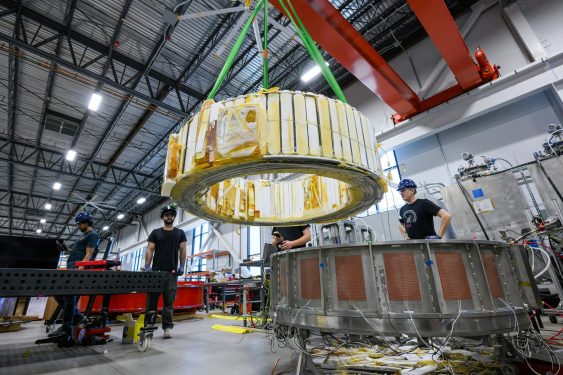Commonwealth Fusion Systems has agreed to sell Italian energy company Eni more than one billion dollars worth of power from its first fusion reactor. The power plant, named Arc, will be built outside of Richmond, Virginia. This location is notable for its proximity to some of the highest densities of data centers in the United States. The 400-megawatt reactor is expected to begin operations in the early 2030s, according to CEO Bob Mumgaard.
The Eni agreement is the second major power purchase deal for Commonwealth Fusion Systems. In June, Google announced it would buy half of the reactor’s output. Neither CFS nor Eni disclosed the specific amount of power covered by the Eni deal or its detailed timeline.
Mumgaard recently reported that the company’s first power plant, the demonstration-scale Sparc reactor in Devens, Massachusetts, is sixty-five percent complete. The company remains on track to activate Sparc later in 2026. Mumgaard explained that building Sparc provides crucial experience for constructing a nearly full-scale system. He stated that Arc will be the first of many reactors supported by a supply chain prepared for large-scale production.
CFS is considered a leader in the fusion industry. Its reactor design is based on the tokamak, a well-researched system that uses D-shaped superconducting magnets to confine and compress superheated plasma. Within this plasma, particles collide to form new atoms and release energy. The company maintains transparency with the scientific community through regular progress updates and has conducted extensive simulations to identify potential challenges.
While CFS expects Sparc to generate more power than is required to sustain its fusion reactions, success cannot be confirmed until the reactor is fully operational. Achieving this goal will likely consume a significant portion of the nearly three billion dollars the company has raised. This funding includes an eight hundred sixty-three million dollar Series B2 round announced three weeks ago, with investments from a diverse group including Nvidia, Google, Breakthrough Energy Ventures, and Eni.
A key question is what happens to the agreements with Google and Eni if Sparc faces delays or does not perform as planned. Mumgaard said the contracts are structured to balance accountability with collaboration. He noted that the partners understand the inherent challenges of pioneering new technology and are not likely to abandon the project if immediate deadlines are missed.
Google has indicated it plans to use electricity from the Arc reactor to power its data centers. Eni, however, as one of the world’s largest oil and gas companies, does not have United States operations that require such a large amount of power. Lorenzo Fiorillo, Eni’s director of technology, R&D, and digital, clarified that the power will be sent to the grid. In essence, Eni will resell the electricity.
Any power generated by the first-of-its-kind Arc reactor will be expensive. Eni is more likely to lose money trading this power on the grid than to turn a profit. Instead, the agreement appears designed to help establish a market price for fusion energy and attract additional funding for the construction of Arc.
Mumgaard acknowledged this strategy. He explained that the power purchase agreement provides certainty about where the power will be sold and at what price. This certainty allows CFS to present a solid package to financial investors and begin discussions about financing the actual construction of the plant.

